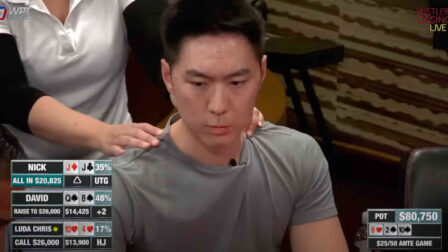Vital Preflop Adjustments You Should Make for Effective MTT Play

5 minutes
Last Updated: May 17, 2022
MTTs (multi-table tournaments) are the poker format that most poker players have encountered with some frequency. Whether you play live or online, it's likely you have played a few MTTs in your life.
There are many differences between MTTs and cash games. The biggest one, of course, is the fact that the blinds are always going up in MTTs and that you will be eliminated once you lose your chips (at least once the re-entry period is over).
All of this means that a different poker strategy must be employed in MTTs compared to cash games, simply because the stack depths don't allow for some common cash game plays while they require some popular MTT plays to be made.
In this article, I look at the top five ways you can adjust your preflop strategy to get better results in MTTs and win more chips in various preflop situations.
5. Reduce Your Raise Size
One of the biggest mistakes I see inexperienced tournament players make is raising 3x or 4x throughout the tournament.
A large raise like this may be an effective strategy in some (weak) tournaments, but for the most part, a smaller raise will accomplish more.
Of course, the quality of play will depend on the site you pick. If you’re looking for some advice on how to get started, check out Tightpoker for useful reviews and poker room comparisons.
Generally speaking, though, when you open hands, your goals include stealing the blinds, getting players to call and re-raise with weaker hands than yours, and fold their cards (which denies their equity).
When you make a 4x raise before the flop, competent players will start folding their cards, even in the big blind, simply because they are not getting the right odds to call against your perceived range.
Of course, if you keep doing this into the late stage of the tournament with a wide range, players will start shoving their 15-25 big blind stacks over the top of your raise, and you will have a hard time calling these all-ins.
Instead, try to stick to a raise of about 2.5x in the early stages and even 2.2x or just 2x in the late stages of the tournament.
Players who know what they are doing will fold to your small raises often enough, and when they don't, you will have more room to make moves after the flop.
4. Increase Your 3-Bet Size
While bad players tend to make their opening raises too big, they also have the tendency to make re-raises too small.
When you re-raise over the top of an open, you should make sure that you are using a size that will put your opponent in a bad spot, especially if they have position on you.
If you make a small re-raise, your opponents will almost always call, especially if you are still somewhat deep-stacked. This may put you at a disadvantage, as much of your equity comes from them folding their hand before the flop.

Of course, you may want to 3-bet smaller when you have the aces and bigger when you have bluffs, but this doesn't really work since your opponents will quickly realize what you are doing.
Instead, try to keep your 3-bet size consistent and try to re-raise some 3.5 – 4x the original raise if you want to get a good number of folds before the flop.
3. Be Mindful of Effective Stack
I have seen it countless times that players simply play their stack as if they were in a cash game, and everyone was sitting with hundreds of big blinds.
Opening small pairs from under the gun or suited connectors in the middle position may be the standard in ring games, but in the latter stages of tournaments, it is a recipe for disaster.
Even if you have a big stack, it does not mean everyone else does. Make sure you have an approximate idea of all the players’ stacks at your table so you can make raises that will make sense.
If you don't, you will find yourself in many situations where a 10bb stack shoves on you, and you are forced to make a call with a weak hand, doubling them up for no good reason.
2. Steal in the Late Stages
The late stages of a poker tournament usually start once the bubble approaches. At this point, players start to get short on chips, and the ranges start to change significantly.
The bubble is an especially good time to steal the blinds.
You should be raising in late positions with a wide range or shoving your entire stack in with a variety of hands if you are short.
No one wants to bust before the bubble, which makes the play in this stage of the tournament a lot tighter. The same continues to be the case as pay jumps approach and as the final table gets closer.

Stealing the blinds and antes is a critical part of any good tournament poker strategy, and if you are not doing it, you will not do well in MTTs. Playing tight only gets you so far in these games!
1. Consider the ICM
I don't expect you to fully understand the ICM or know exactly how it affects every single decision you make in a tournament.
However, what you should understand is that once you are at the final table, your decisions to make calls matter more since there are serious pay jumps involved.
Some players choose to ignore the ICM and always go for the win, which is a strategy that works well for them. However, if you plan on doing this, you should be taking a very aggressive approach at the FT, exploiting other players’ tendencies to fold too much.
You should not be making light calls for all or majority of your chips at the final table or in the late stages of massive poker tournaments.
As soon as the prizes get significant and the next pay jump is something worth considering, you should make sure not to call off too many all-ins.
Instead try and put your opponents to the test by being the one making the moves and putting them to a decision for all their chips!




















